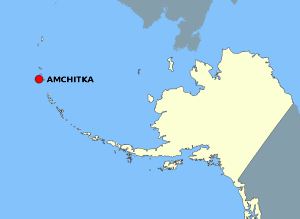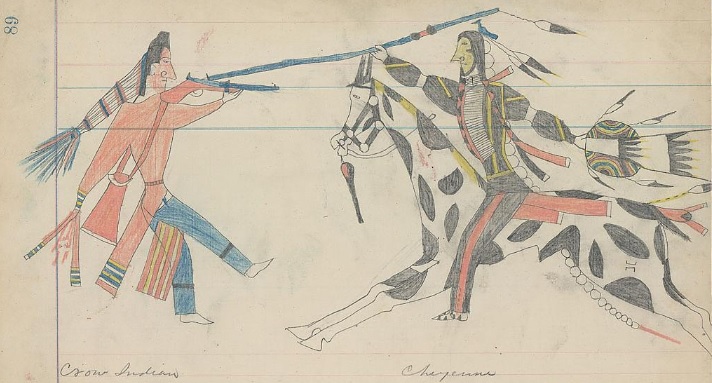|
Gerard Baker (National Park Service)
Gerard Baker (born December 2, 1953) is an American retired National Park Service (NPS) ranger. In his more than 30 years with the NPS, he served as the superintendent of Lewis and Clark National Historic Trail, Chickasaw National Recreation Area, Little Bighorn Battlefield National Monument, and Mount Rushmore. A registered member of the Three Affiliated Tribes and the highest ranking Native American in the history of the NPS, Baker incorporated Native American perspectives at Mount Rushmore and headed the Corps of Discovery II project to commemorate the Lewis and Clark Expedition. His tenure at Little Big Horn was marked by conflicts with admirers of George Armstrong Custer. Early life and education Baker was born and raised on Fort Berthold Indian Reservation in North Dakota. He has two brothers and a sister. His mother was Hidatsa, and his father, Paige Baker Sr., was Mandan and Hidatsa; Baker speaks the Hidatsa language. His Hidatsa language name is ''Zaa-sha-shee-dish'' (Y ... [...More Info...] [...Related Items...] OR: [Wikipedia] [Google] [Baidu] |
Fort Berthold Indian Reservation
The Fort Berthold Indian Reservation is a U.S. Indian reservation in western North Dakota that is home for the federally recognized Mandan, Hidatsa, and Arikara Nation, also known as the Three Affiliated Tribes. The reservation includes lands on both sides of the Missouri River. Created in 1870, the reservation is a small part of the lands originally reserved to the tribes by the Fort Laramie Treaty of 1851, which allocated nearly 12 million acres (49,000 km²) in North Dakota, South Dakota, Montana, Nebraska and Wyoming. Location The reservation is located on the Missouri River in (in descending order of reservation land) McLean, Mountrail, Dunn, McKenzie, Mercer and Ward counties. The reservation consists of 988,000 acres (4,000 km²), of which 457,837 acres (1,853 km²) are owned by Native Americans, either as individual allotments or communally by the tribe. The McLean National Wildlife Refuge lies within its boundaries. The Four Bears Bridge, w ... [...More Info...] [...Related Items...] OR: [Wikipedia] [Google] [Baidu] |
Fort Union Trading Post
Fort Union Trading Post National Historic Site is a partial reconstruction of the most important fur trading post on the upper Missouri, 1829-1867. The fort site is about two miles from the confluence of the Missouri River and its tributary, the Yellowstone River, on the Dakota side of the North Dakota/Montana border, 25 miles from Williston, North Dakota. In 1961, the site was designated by the Department of Interior as one of the earliest declared National Historic Landmarks in the United States.Roy A. Matteson (October 5, 1951) , National Park Service and The National Park Service formally named it as Fort Union Trading Post to differentiate it from Fort Union National Monument, a historic frontier Army post in New Mexico. The historic site interprets how portions of the fort may have looked in 1851, based on archaeological excavations and contemporary drawings. Among the sources were drawings by Swiss artist Rudolf Kurz, who worked as the post clerk in 1851. History Fort ... [...More Info...] [...Related Items...] OR: [Wikipedia] [Google] [Baidu] |
Greenpeace
Greenpeace is an independent global campaigning network, founded in Canada in 1971 by Irving Stowe and Dorothy Stowe, immigrant environmental activists from the United States. Greenpeace states its goal is to "ensure the ability of the Earth to nurture life in all its diversity" and focuses its campaigning on worldwide issues such as climate change, deforestation, overfishing, commercial whaling, genetic engineering, and anti-nuclear issues. It uses direct action, lobbying, research, and ecotage to achieve its goals. The network comprises 26 independent national/regional organisations in over 55 countries across Europe, the Americas, Africa, Asia and the Pacific, as well as a co-ordinating body, Greenpeace International, based in Amsterdam, the Netherlands. The global network does not accept funding from governments, corporations, or political parties, relying on three million individual supporters and foundation grants. [...More Info...] [...Related Items...] OR: [Wikipedia] [Google] [Baidu] |
Pine Beetle
''Dendroctonus'' is a genus of bark beetles. It includes several species notorious for destroying trees in the forests of North America. The genus has a symbiotic relationship with many different yeasts, particularly those in the genera '' Candida'' and '' Pichia'' that aid in digestion and pheromone production. Species include: *'' Dendroctonus adjunctus'' - roundheaded pine beetle *'' Dendroctonus approximatus'' - Mexican pine beetle *'' Dendroctonus barberi -'' southwestern pine beetle *''Dendroctonus brevicomis'' - western pine beetle *'' Dendroctonus frontalis'' - southern pine beetle *''Dendroctonus jeffreyi'' - Jeffrey pine beetle *'' Dendroctonus mesoamericanus'' - Mesoamerican pine beetle *''Dendroctonus mexicanus'' - smaller Mexican pine beetle *''Dendroctonus micans'' - great spruce bark beetle *'' Dendroctonus murrayanae'' - lodgepole pine beetle *''Dendroctonus parallelocollis'' - larger Mexican pine beetle *''Dendroctonus ponderosae'' - mountain pine beetle *''Den ... [...More Info...] [...Related Items...] OR: [Wikipedia] [Google] [Baidu] |
Nakota
Nakota (or Nakoda or Nakona) is the endonym used by those '' Assiniboine'' Indigenous people in the US, and by the Stoney People, in Canada. The Assiniboine branched off from the Great Sioux Nation (aka the ''Oceti Sakowin'') long ago and moved further west from the original territory in the woodlands of what is now Minnesota into the northern and northwestern regions of Montana and North Dakota in the United States, and Manitoba, Saskatchewan, and Alberta in Canada. In each of the Western Siouan language dialects, ''nakota'', ''dakota'' and ''lakota'' all mean "friend". Linguistic history Historically, the tribes belonging to the Sioux nation have generally been classified into three large language groups: * Lakota (; anglicized as ''Teton''), who form the westernmost group. * Dakota, ('' Dakhótiyapi'' - ''Isáŋyathi'' anglicized as ''Santee'') originally the easternmost group * ''Nakota'', originally the two central tribes of the Yankton and the Yanktonai, The Ass ... [...More Info...] [...Related Items...] OR: [Wikipedia] [Google] [Baidu] |
Dakota People
The Dakota (pronounced , Dakota language: ''Dakȟóta/Dakhóta'') are a Native American tribe and First Nations band government in North America. They compose two of the three main subcultures of the Sioux people, and are typically divided into the Eastern Dakota and the Western Dakota. The four bands of Eastern Dakota are the Bdewákaŋthuŋwaŋ, Waȟpéthuŋwaŋ, Waȟpékhute, and Sisíthuŋwaŋ and are sometimes referred to as the Santee (''Isáŋyathi'' or ''Isáŋ-athi''; "knife" + "encampment", "dwells at the place of knife flint"), who reside in the eastern Dakotas, central Minnesota and northern Iowa. They have federally recognized tribes established in several places. The Western Dakota are the Yankton, and the Yanktonai (''Iháŋktȟuŋwaŋ'' and ''Iháŋktȟuŋwaŋna''; "Village-at-the-end" and "Little village-at-the-end"), who reside in the Upper Missouri River area. The Yankton-Yanktonai are collectively also referred to by the endonym ''Wičhíyena'' ("Those ... [...More Info...] [...Related Items...] OR: [Wikipedia] [Google] [Baidu] |
Tipi
A tipi , often called a lodge in English, is a conical tent, historically made of animal hides or pelts, and in more recent generations of canvas, stretched on a framework of wooden poles. The word is Siouan, and in use in Dakhótiyapi, Lakȟótiyapi, and as a loanword in US and Canadian English, where it is sometimes spelled phonetically as ''teepee'' and ''tepee'' (also pronounced ). Historically, the tipi has been used by some Indigenous peoples of the Plains in the Great Plains and Canadian Prairies of North America, notably the seven tribes of the Sioux, as well as among the Iowa people, the Otoe and Pawnee, and among the Blackfeet, Crow, Assiniboines, Arapaho, and Plains Cree. Lewis H. Morgan, "I have seen it in use among seven or eight Dakota sub-tribes, among the Iowas, Otoes, and Pawnees, and among the Black-feet, Crows, Assiniboines, and Crees. In 1878, I saw it in use among the Utes of Colorado. A collection of fifty of these tents, which would accommoda ... [...More Info...] [...Related Items...] OR: [Wikipedia] [Google] [Baidu] |
Monticello
Monticello ( ) was the primary plantation of Founding Father Thomas Jefferson, the third president of the United States, who began designing Monticello after inheriting land from his father at age 26. Located just outside Charlottesville, Virginia, in the Piedmont region, the plantation was originally , with Jefferson using the labor of enslaved Africans for extensive cultivation of tobacco and mixed crops, later shifting from tobacco cultivation to wheat in response to changing markets. Due to its architectural and historic significance, the property has been designated a National Historic Landmark. In 1987, Monticello and the nearby University of Virginia, also designed by Jefferson, were together designated a UNESCO World Heritage Site. The current nickel, a United States coin, features a depiction of Monticello on its reverse side. Jefferson designed the main house using neoclassical design principles described by Italian Renaissance architect Andrea Palladio and rew ... [...More Info...] [...Related Items...] OR: [Wikipedia] [Google] [Baidu] |
Interior Department
An interior ministry (sometimes called a ministry of internal affairs or ministry of home affairs) is a government department that is responsible for internal affairs. Lists of current ministries of internal affairs Named "ministry" * Ministry of Internal Affairs (Adygea) * Ministry of Interior Affairs (Afghanistan) * Ministry of Internal Affairs (Albania) * Ministry of Internal Affairs (Altai Republic) * Ministry of the Interior (Argentina) * Ministry of the Interior (Austria) * Ministry of Internal Affairs (Azerbaijan) * Ministry of Interior (Bahrain) * Ministry of Home Affairs (Bangladesh) * Ministry of Public Administration (Bangladesh) * Ministry of Internal Affairs (Bashkortostan) * Ministry of Internal Affairs (Belarus) * Ministry of Home Affairs (Bermuda) * Ministry of Home and Cultural Affairs (Bhutan) * Federal Ministry of Interior (Federation of Bosnia and Herzegovina) * Ministry of National Integration (Brazil) * Ministry of Home Affairs (Brunei) * Ministry of I ... [...More Info...] [...Related Items...] OR: [Wikipedia] [Google] [Baidu] |
Counting Coup
Among the Plains Indians of North America, counting coup is the warrior tradition of winning prestige against an enemy in battle. It is one of the traditional ways of showing bravery in the face of an enemy and involves intimidating him, and, it is hoped, persuading him to admit defeat, without having to kill him. These victories may then be remembered, recorded, and recounted as part of the community's oral, written, or pictorial histories. Historical precedents Historically, any blow struck against the enemy counted as a coup, but the most prestigious acts included touching an enemy warrior with a hand, bow, or coup stick and escaping unharmed, and without harming the enemy, except for the enemy's wounded pride. ''Antiques Roadshow'', WGBH. Touching the first enemy to die in battle or touching the enemy's defensive works was c ... [...More Info...] [...Related Items...] OR: [Wikipedia] [Google] [Baidu] |
7th Cavalry Regiment
The 7th Cavalry Regiment is a United States Army cavalry regiment formed in 1866. Its official nickname is "Garryowen", after the Ireland, Irish air "Garryowen (air), Garryowen" that was adopted as its march tune. The regiment participated in some of the largest battles of the Indian Wars, including its famous defeat at the Battle of Little Bighorn, where its commander Lieutenant Colonel George A. Custer was killed. The regiment also committed the Wounded Knee Massacre, where more than 250 men, women and children of the Lakota people, Lakota were killed. The 7th Cavalry became part of the 1st Cavalry Division (United States), 1st Cavalry Division in the 1920s, it went on to fight in the Pacific War, Pacific Theater of World War II and took part in the Admiralty Islands campaign, Admiralty Islands, Battle of Leyte, Leyte and Battle of Luzon, Luzon campaigns. It later participated several key battles of the Korean War. During the Korean War the unit committed the No Gun Ri massa ... [...More Info...] [...Related Items...] OR: [Wikipedia] [Google] [Baidu] |
.png)




